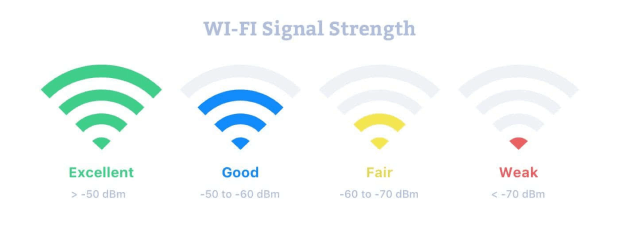
You have a respectable pot of money earning after nothing within the financial institution. Frustrated, you want to spend money on a different portfolio, but you’re concerned you might purchase just earlier than a sudden market drop. Should you wait for a correction? Should you drip-feed your money over time? Or have you simply made investments with all the cash now and be done with it?
Being nervous approximately investing a large sum of money is understandable,
particularly inside the cutting-edge environment.
Almost all valuation metrics suggest the United States inventory marketplace – the biggest in the international – to be overrated relative to history. Merrill Lynch’s August fund manager survey suggests a record percentage accept as true with international equities are overvalued. It may want to hardly be otherwise: the continued bull market is in its ninth 12 months, making it the second-longest rally in records, and shares have surged some 250 percent over that duration.
Related Articles :
- Aleppo endgame nears as evacuation resumes
- Top stocks, companies, and cryptocurrencies to invest in for the blockchain boom
- Japanese authorities raise their view on the financial system for the first time since March 2015
- Calculating A Landlord’s Buy-to-Let Property Investment Returns
- Government to apply profits tax info to forestall the effluent from claiming LPG subsidies
At the lump, equal time, the warning can feed backfire. Legendary fund manager Peter Lynch plunged.
Was Lynch proper? Or is there a case for reading out a costly market? As soon as, quipped that “for extra cash has been misplaced with the aid of traders preparing for corrections, or seeking to assume corrections than has been misplaced in corrections themselves.”
Wait for correction?
Quantitative expert and Elm Partners founder Victor Haghani is currently being investigated. His interest was piqued through a purchaser who had some investable cash but wanted to watch for a correction earlier than putting it to work. Haghani turned into skepticism: even though double-digit corrections are not unusual, they’ll manifest at a much higher rate factor or take so long that the investor loses endurance and gets “driven in” at a miles better stage.
As it happens, Haghani found it is often profitable to attend. He checked out previous times wherein markets were expensive, defined as one general deviation above their cyclically-adjusted fee-profits (CCAPE ratio. In fifty-six percent of instances, he found, shares could have fallen 10 percent according to sentiment beneath your access charge to some degree over the subsequent 3 years.
However, waiting can also prove highly priced. In the forty-four in line with the cent of cases where the correction doesn’t show up, Haghani determined, stocks went on to appreciate by approximately 30 in step with cent – much more than the average amount you would have made through waiting. Haghani ran several other checks, tweaking the criteria concerning time horizon and correction size. He located the longer you’re prepared to anticipate a correction to arise, or the bigger the correction you are ready for, the higher the average value.
Overall, the ability charges associated with waiting significantly outweigh the advantages. If you plan to look ahead to a lower entry point, be prepared to just accept there’s an excellent chance it’s going to cost you a significant amount of money.
What about the drip-feeding approach, wherein you gradually make investments in your cash over time? Euro-price averaging (ECA) has an intuitive attraction in that your cash buys extra stocks when expenses are low and much less whilst expenses are high. More frequently than not, stocks push upward in price; doesn’t this suggest that if you delay investing your cash, you may miss out on a number of the profits associated with investing?
Short solution: sure. A 2014 evaluation performed using New York-based Alliance Bernstein found that in 1926, stocks averaged annual gains of 12.2 according to a cent. If you’d invested your cash over a 12-month duration via constant monthly installments, but average annual returns fall to eight in keeping with the cent plonge leather Wikipedia
“The prices were even better in robust markets,” the firm delivered.
These days updated Vanguard document, ‘Invest now or quickly keep your cash?’, involves the same end. Vanguard looked at 3 countrywide inventory markets – America, the UK, and Australia – and tested the performance of a balanced portfolio, which includes 60 consistent with cent equities, forty in keeping with cent bonds. Instead of drip-feeding cash over a 6- or 12-month period, investing immediately brought about better returns about three-quarters of the time.
The results have been even worse if you averaged over a three-12 months length: in such instances, investing right away received out ninety-two percent of the time. Vanguard also tested alternative asset allocations – for example, 100 percent equities, one hundred percent bonds, or a 50:50 stock-bonds portfolio – however, the effects were essentially unchanged.
Averaging investments over time commonly hurts returns. However, advocates argue it can decrease hazards, protecting careful traders in occasional instances, whilst markets stumble. One overlooked danger is that averaging into a costly stock market can backfire, resulting in extra shares being bought closer to a market pinnacle.
Many strategists argue shares are inside the past due-cycle phase of the bull market However, this phase can be closed for a long time. Furthermore, recession danger seems minimal in the meantime, and nearly none of the traditional bear market indicators are present, in keeping with Citibank’s international enduring market tick list. Accordingly, buyers need to be alive to the chance that the ECA approach will result in them buying shares at successively higher costs through the years, closer to the eventual market top.
Still, easing one’s cash into the marketplace beats the lump sum technique in almost one-1/3 of cases, in keeping with Vanguard’s look. Occasionally, in very terrible markets, the savings worried are full-size. However, Alliance Bernstein’s studies show the consequences are asymmetrical – even though ECA can save you money in negative markets, it tends to cost a lot extra in strong markets.
Overall, then, the slowly-does-it technique to investing commonly hurts returns. It will prevent cash on activities, but not as a good deal because it will cost you while markets are strong.
ECA holds mental but no longer monetary appeal, although that doesn’t imply the method is without advantage. Behavioral economists have shown that for traders, the pain of a euro misplaced is kind of two times as great as the pleasure of a euro won. This loss aversion method, the mere prospect–butter–flung–of chasing just before a sharp fall, is probably to present might-be investors’ sleepless nights. Drip-feeding into investments over the years eases this tension, and gradually gaining funding publicity will continually be optimal toverno publicity at all.












